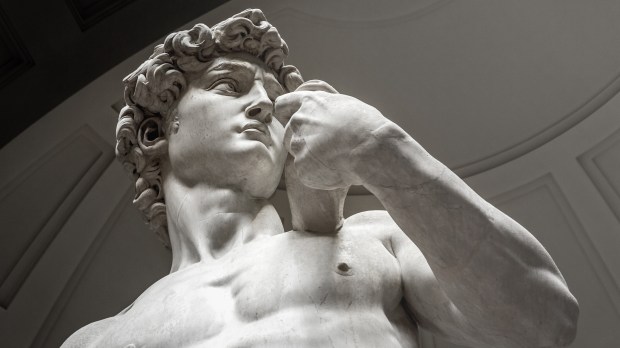To the left of the main entrance of Florence’s storied Piazza della Signoria is one of Michelangelo’s most famous works, David. Though the original was moved to the Accademia Museum, built in the late 1800s specifically to house this statue, it had sat for centuries at this spot. In the early 20th century, a copy was reproduced and placed where it once stood.
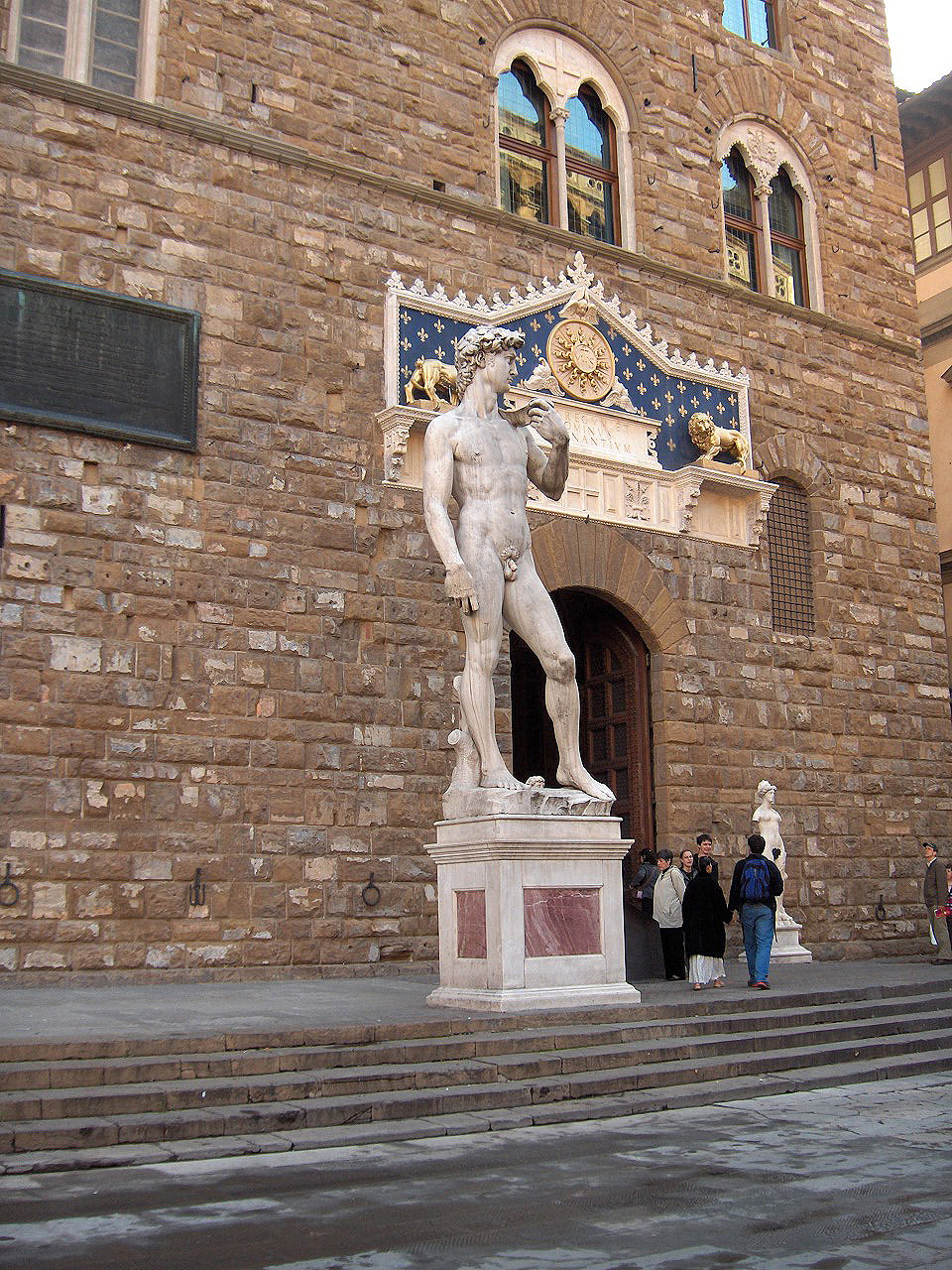
The work depicts David the moment before engaging the battle-proven giant, Goliath. Knowing he would lose if the fight became physical, David stands at a cautious distance calculating and analyzing his adversary.
With his sling over his left shoulder, his right hand holding the rock (visible from the rear), David’s eyes are fixed on Goliath as he searches for weakness. We know the outcome: David kills Goliath with one shot.
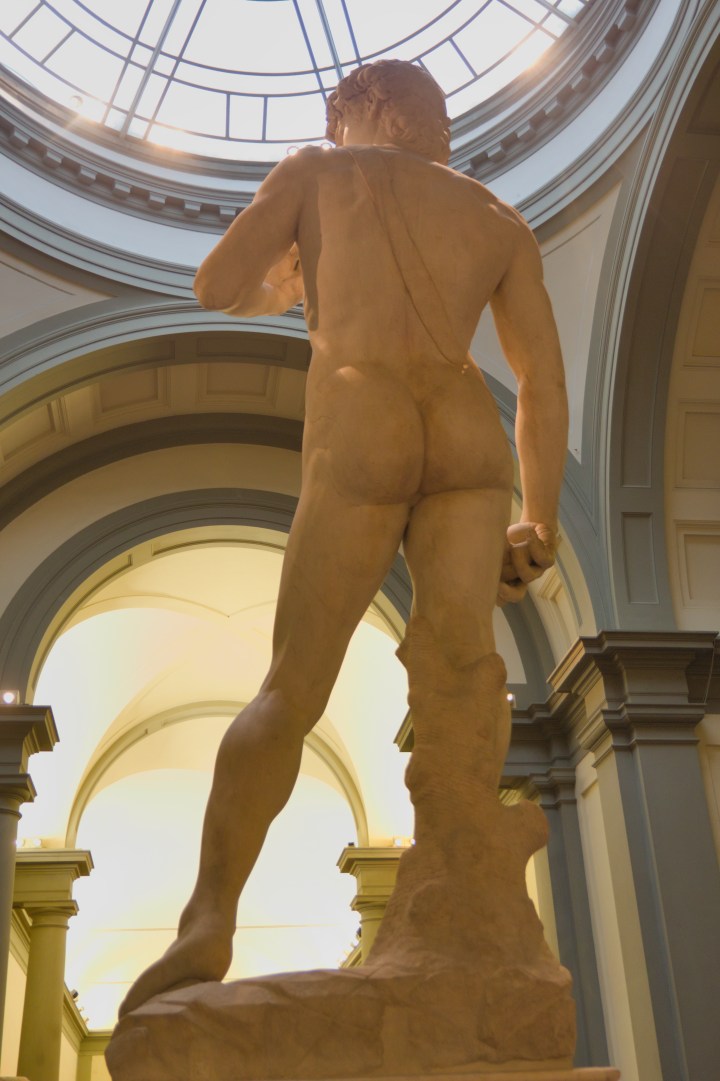
While the statue is charged with archetypal Renaissance themes – humanism, individualism, rationalism, classical beauty, strength, and intelligence – the work also had political undertones. David was seen as an affront to the powerful Medici family dynasty, which was exiled from Florence to Rome in 1504. During that period, Florence was governed as an independent republic.
David also represented the mode of governance embraced by the Republic of Florence during the period of exile. Though threatened on all sides by larger, more powerful rival states, as well as by the hegemony of the exiled Medici, the republican government of Florence had to survive by other means. With minimal armed forces, the republicans were forced to utilize negotiation and diplomacy with surrounding potentates with the same shrewdness and cleverness that led David to victory over his more powerful rival.
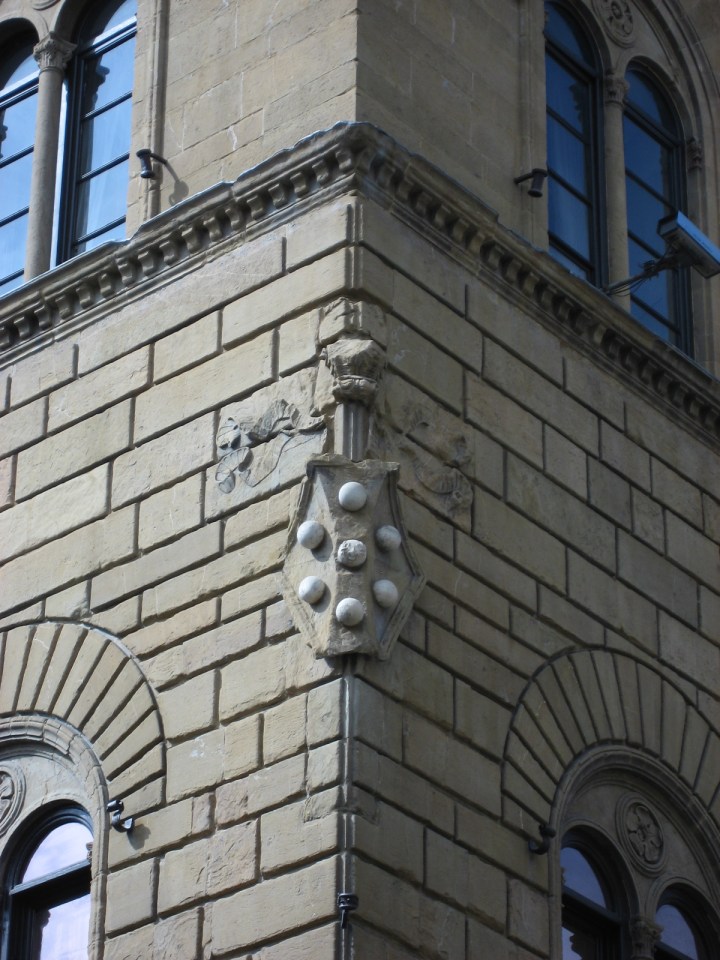
Set against David is another statue just a few meters away. To the right of the door is Cacus and Hercules, realized some 20 years after David. From Roman mythology, the demigod Hercules is about to inflict punishment on the fire-belching monster Cacus for stealing cattle by clubbing him to death. It was sculpted by Baccio Bandinelli as a gift to the Medici family, who returned to Florence in 1512.
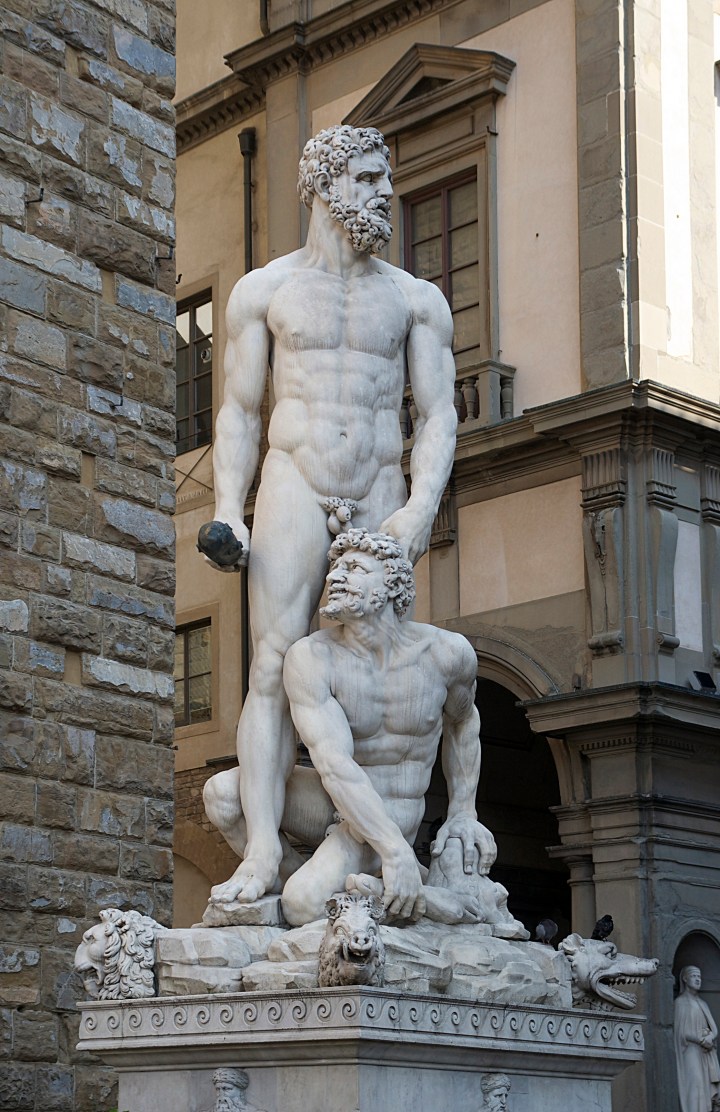
It is said that the Medici rulers were delighted with the work, especially as it was juxtaposed to the earlier statue by Michelangelo. The Medici felt they were the powerful Hercules with the colossal club, while their adversaries, the Florentine republicans, were the shepherd boy armed with a pebble.
Certainly, these two Renaissance sculptures suggest differing approaches to conflict. As David conquered the adversarial giant through shrewdness, the pagan Hercules model suggests brute strength.
But it was not just deftness that led to David’s victory. His success – assured by the providential Hand of God – represents the triumph of good over evil. He foreshadows the coming of Christ and the victory over sin and evil.
In a world marked by conflict and war, may the story of David and Goliath give us hope that evil will never triumph.
